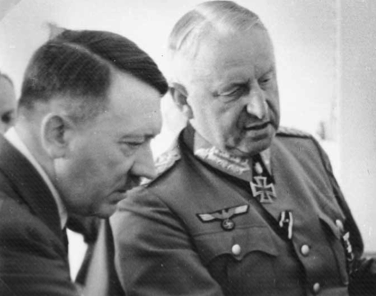Saturday 24 February 1940
 |
| The unarmed first prototype Typhoon P5212 fighter-bomber taken just before its first flight on 24 February 1940. The prototype has a small tail unit and a solid fairing behind the cockpit. |
The Finnish cabinet, still considering the Soviet peace offer on 24 February 1940, engages in top-secret discussions with their British military representative about the possibility of an Anglo/French expeditionary force. British envoy to Finland Sir George Gordon Vereker makes the wild claim that 20-22,000 Allied soldiers will leave for Finland on March 15, provided the Finns make a formal request by March 5. Where Vereker comes up with this outlandish projection is unclear.
Battle of the Atlantic: U-63 (Oberleutnant zur See Günther Lorentz) torpedoes and sinks Swedish freighter Santos off Kirkwall, Orkney. The Santos is carrying 8 men from the Swedish freighter Liana, which was sunk on 16 February, and 6 of them perish. Altogether, including the men from the Liana, there are 31 who perish in the sinking and 12 who survive. U-63 was one of the U-boats which had accompanied the surface fleet in Operation Nordmark.
British freighters Royal Archer, Clan Morrison, and Jevington Court hits a mine and sinks in the North Sea.
The British at Malta detain US freighter Scottsburg for several hours, then release it.
Convoy OA 98GF departs from Southend, and OB 98 departs from Liverpool.
European Air Operations: The RAF conducts reconnaissance over Germany and Austria, with one aircraft making a forced landing in Belgium. It also carries out daylight reconnaissance over the Heligoland Bight and the German bases in northwest Germany.
German Military: The German high command - General von Rundstedt, Halder, Guderian - all come around to the von Manstein Plan for Fall Gelb. This first draft of the revised plan will see five panzer divisions and motorized divisions headed through the Ardennes Forest (von Rundstedt), north of the Maginot Line but south of the bulk of the BEF. The mobile divisions are to take bridges across the Meuse on the fly, with the assistance of paratroopers, and then race to the coast. There is still a "right hook" to the north (General von Bock), but its importance is vastly diminished and intended more as a decoy to make the BEF look north and away from the main effort. The plan is still subject to revision, but it is now much more along the lines that Manstein and Hitler wanted.
RAF: First flight of the Hawker Typhoon P5212 by Hawker test pilot Philip Lucas. It is another Sydney Camm design, he who had designed the Hawker Hurricane which is the fighter currently arming most RAF front-line squadrons.
German/Italian Relations: Germany and Italy sign a trade agreement by which the Germans will supply Italy with more coal, of which the Reich has ample supplies.
German Homefront: Hitler give a speech on one of the innumerable days that he makes the nation celebrate - this one is the 20th anniversary of the founding of the NSDAP Party (which he was not a member of at the time). He repeats the "stab in the back" thesis of the post-war years, with the slight twist that all that Germany needed at the time was someone like him in charge: "Germany would not have lost the last war if I had been Reichs chancellor in 1918." This, of course, ignores the huge battle losses and retreats of 1918, an empire on the verge of revolution (and actual revolution in places such as the navy), and many other aspects of historical reality.
British Homefront: Prime Minister Chamberlain seemingly takes the bait thrown in the water by Hitler's speech. He gives a speech in Birmingham in which he condemns Germany for its desire for "domination of the world," but also indicates a continued willingness to search for peace - but only with a different German government.
Scandinavia: The Foreign Ministers of Denmark, Norway and the other Scandinavian nations gather in Copenhagen. They cite "absolute neutrality" of Denmark, Norway and Sweden as their ultimate position. Not much is said about Finland, but the implication of "absolute neutrality" is very clear.
 |
| Hitler and von Manstein, principal architects of the final Fall Gelb plan. |
February 1940
February 1, 1940: Second Battle of SummaFebruary 2, 1940: Soviet Assaults at Summa February 3, 1940: Soviets Capture a Bunker
February 4, 1940: Peace Talks in Stockholm
February 5, 1940: Allies to Invade Norway
February 6, 1940: Careless Talk Costs Lives
February 7, 1940: IRA Terrorists Executed
February 8, 1940: Spies!
February 9, 1940: The Welles Mission
February 10, 1940: Confiscation of Jewish Goods
February 11, 1940: Soviets Attack Mannerheim Line
February 12, 1940: Breaches In Mannerheim Line
February 13, 1940: Soviets Inching Forward in Finland
February 14, 1940: Soviets Batter Mannerheim Line
February 15, 1940: Finns Retreat
February 16, 1940: Altmark Incident
February 17, 1940: Manstein and Hitler Discuss Fall Gelb
February 18, 1940: Operation Nordmark
February 19, 1940: King Gustav Says No
February 20, 1940: Falkenhorst Commands Weserubung
February 21, 1940: Radar Advances
February 22, 1940: Friendly Fire
February 23, 1940: Soviets Present Their Demands
February 24, 1940: Fall Gelb Revised
February 25, 1940: Mr. Welles Comes to Visit
February 26, 1940: Battle of Honkaniemi
February 27, 1940: Finns Retreat Again
February 28, 1940: Overseas Volunteers Help Finland
February 29, 1940: Finns Accept Soviet Terms In Principle
2020
No comments:
Post a Comment